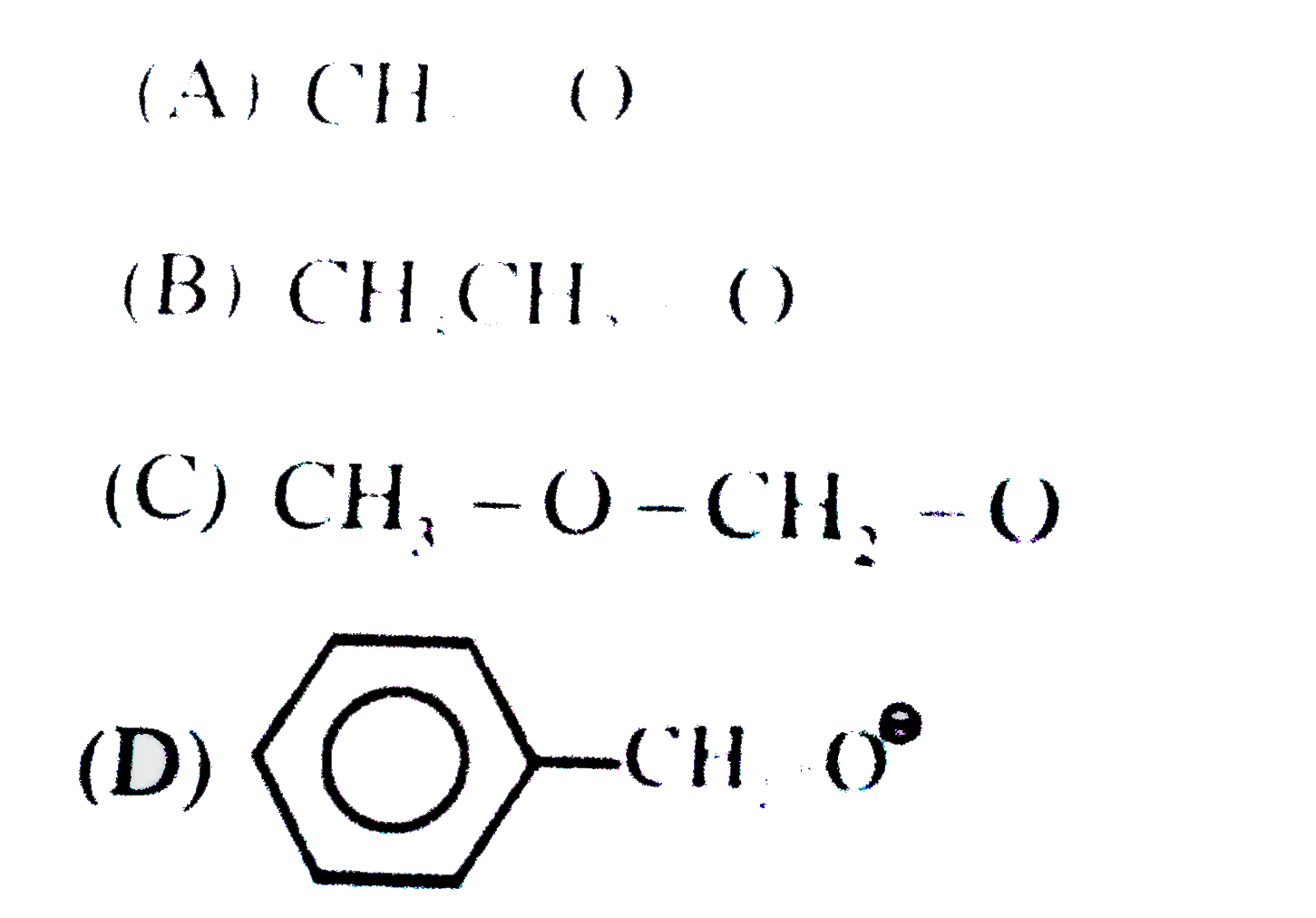A nucleophilic reagent is
The correct Answer is:D
To determine which of the given options is a nucleophilic reagent, we need to understand what a nucleophile is. A nucleophile is a species that has a lone pair of electrons or a negative charge and is capable of donating these electrons to an electrophile (a species that accepts electrons).
Let's analyze the options one by one:
1. Option A: Carbon Dioxide (CO₂)
- The structure of carbon dioxide shows that carbon is bonded to two oxygen atoms with double bonds. Oxygen is more electronegative than carbon, leading to a partial negative charge on the oxygen atoms and a partial positive charge on the carbon atom. This makes carbon dioxide stable and more likely to act as an electrophile rather than a nucleophile.
- Conclusion: Carbon dioxide is not a nucleophilic reagent.
2. Option B: Boron Trifluoride (BF₃)
- Boron has an incomplete octet with three fluorine atoms bonded to it. Boron has an empty p orbital, which makes BF₃ electron-deficient. It tends to accept a pair of electrons, acting as an electrophile.
- Conclusion: Boron trifluoride is not a nucleophilic reagent.
3. Option C: Aluminum Chloride (AlCl₃)
- Similar to BF₃, aluminum chloride has an incomplete octet and a vacant p orbital. It can accept a pair of electrons, thus acting as an electrophile.
- Conclusion: Aluminum chloride is not a nucleophilic reagent.
4. Option D: Ammonia (NH₃)
- Ammonia has a nitrogen atom with a lone pair of electrons. This lone pair can be donated to an electrophile, making ammonia a nucleophile.
- Conclusion: Ammonia is a nucleophilic reagent.
Final Answer: The nucleophilic reagent among the options provided is Ammonia (NH₃).
- The structure of carbon dioxide shows that carbon is bonded to two oxygen atoms with double bonds. Oxygen is more electronegative than carbon, leading to a partial negative charge on the oxygen atoms and a partial positive charge on the carbon atom. This makes carbon dioxide stable and more likely to act as an electrophile rather than a nucleophile.
- Conclusion: Carbon dioxide is not a nucleophilic reagent.
- Boron has an incomplete octet with three fluorine atoms bonded to it. Boron has an empty p orbital, which makes BF₃ electron-deficient. It tends to accept a pair of electrons, acting as an electrophile.
- Conclusion: Boron trifluoride is not a nucleophilic reagent.
- Similar to BF₃, aluminum chloride has an incomplete octet and a vacant p orbital. It can accept a pair of electrons, thus acting as an electrophile.
- Conclusion: Aluminum chloride is not a nucleophilic reagent.
- Ammonia has a nitrogen atom with a lone pair of electrons. This lone pair can be donated to an electrophile, making ammonia a nucleophile.
- Conclusion: Ammonia is a nucleophilic reagent.
Similar Questions
What do you understand by nucleophilic reagents and what type of species act as nucleophiles ? Give at least two examples.
View Solution(a) The double bond in aldehydes and ketones is reactive towards nucleophilic reagents like CN− whereas that in an alkene is not.
(b) Alkenes undergo electrophilic addition whereas aldehydes and ketones undergo nucleophilic addition.
View Solution
Knowledge Check
Grignard reagent is usually prepared by
R−X+MgEt2O−−→RMgX Grignard reagent
Ar−X+MgEt2O−−→ArMgX Grignard reagent
Grignard reagent acts as a strong base. Grignard reagent carry out nucleophilic attack in absence of acidic hydrogen. Grignard reagent form complex with its ether solvent. Complex formation with molecular of ether is an important factor in the formation and stability of Grignard reagent.
Which of the following Grignard reagents is not possible ?AHS−CH2−CH2−CH2MgBrBHO−CH2−CH2−CH2MgBrCNH2−CH2−CH2−CH2MgBrDAll of theseGrignard reagent is usually prepared by
R−X+MgEt2O−−→RMgX Grignard reagent
Ar−X+MgEt2O−−→ArMgX Grignard reagent
Grignard reagent acts as a strong base. Grignard reagent carry out nucleophilic attack in absence of acidic hydrogen. Grignard reagent form complex with its ether solvent. Complex formation with molecular of ether is an important factor in the formation and stability of Grignard reagent.
What is the correct order of reactivity of halides with magnesium ?AR−Cl>R−Br>R−IBR−Br>R−Cl>R−ICR−I>R−Br>R−ClDR−I=R−Br=R−ClGrignard reagent is usually prepared by
R−X+MgEt2O−−→RMgX Grignard reagent
Ar−X+MgEt2O−−→ArMgX Grignard reagent
Grignard reagent acts as a strong base. Grignard reagent carry out nucleophilic attack in absence of acidic hydrogen. Grignard reagent form complex with its ether solvent. Complex formation with molecular of ether is an important factor in the formation and stability of Grignard reagent.
How many different Grignard reagents when react with EtOH, give n-butane as product (excluding stereoisomerism).A1B2C3D4
Order of nucleophilicity is
View SolutionArrange the following group in order of their nucleophilic strength :-

View SolutionGrignard reagent is usually prepared by
R−X+MgEt2O−−→RMgX Grignard reagent
Ar−X+MgEt2O−−→ArMgX Grignard reagent
Grignard reagent acts as a strong base. Grignard reagent carry out nucleophilic attack in absence of acidic hydrogen. Grignard reagent form complex with its ether solvent. Complex formation with molecular of ether is an important factor in the formation and stability of Grignard reagent.
Which of the following will undergo acid-base reaction with Grignard reagent ?
View SolutionGrignard reagent is usually prepared by
R−X+MgEt2O−−→RMgX Grignard reagent
Ar−X+MgEt2O−−→ArMgX Grignard reagent
Grignard reagent acts as a strong base. Grignard reagent carry out nucleophilic attack in absence of acidic hydrogen. Grignard reagent form complex with its ether solvent. Complex formation with molecular of ether is an important factor in the formation and stability of Grignard reagent.
Cl−O∣∣C−O−Et(1)xRMgX−−−−−−−→(2)NH4Cl3∘ alcohol. Value of x is :
View SolutionWhich pairs are not required for a nucleophilic aromatic substitution reaction ?
View Solution
